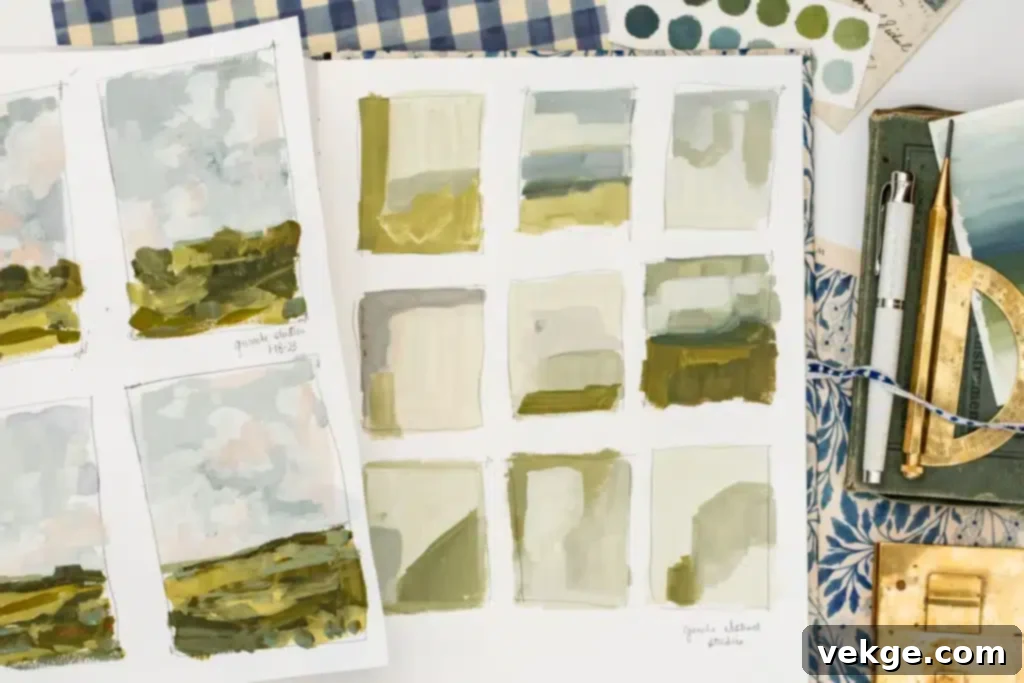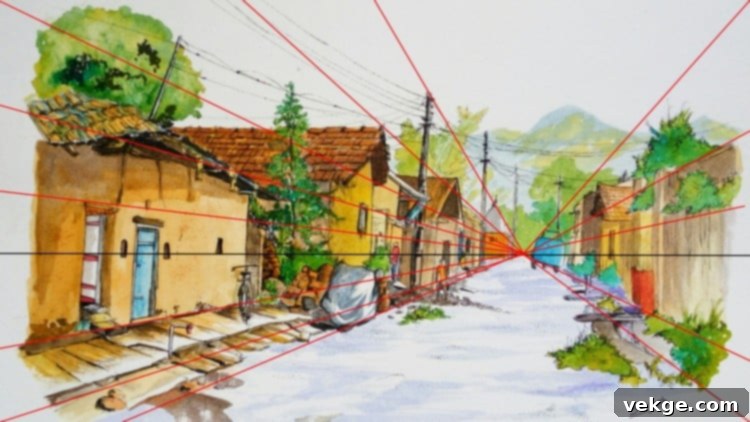Unlock Your Inner Artist: A Comprehensive Guide to DIY Painting & Drawing Techniques
The journey into the world of art is a deeply enriching and therapeutic experience, offering endless opportunities for creativity, self-expression, and personal growth. From the delicate stroke of a brush to the confident line of a pencil, every artist embarks on a unique adventure, transforming imagination into tangible beauty. This guide is designed to empower artists at all levels, from complete beginners to seasoned enthusiasts, by exploring various DIY painting and drawing techniques. Our goal is to equip you with the knowledge and inspiration needed to unleash your creative potential and find immense joy in the process of art-making.
Embracing the Basics of Drawing: Your Creative Foundation
Mastering the fundamentals of drawing is the essential groundwork for any artistic endeavor, laying a solid foundation before you dive into more complex techniques. This crucial stage involves understanding core principles such as shapes, lines, perspective, and shading.
Begin your artistic journey by practicing with simple objects. Focus on observing their basic geometric forms – cubes, spheres, cylinders – and how light interacts with them. Gradually, you can progress to more intricate compositions, paying meticulous attention to light sources and the shadows they cast. Shadows are not merely dark areas; they are integral to defining form, creating depth, and adding realism to your artwork. Experiment with different pencil grades (from hard 2H for light lines to soft 6B for rich darks) to understand how varying pressure and tools affect your marks.
Beyond pencils and paper, the choice of materials plays a significant role in an artist’s drawing toolkit. While specialized art supplies are valuable, an inventive artist often finds new purposes for everyday items. For instance, something as simple as repurposed water bottles can serve multiple functions in a studio – from quenching thirst to cleaning brushes or mixing pigments. This highlights the importance of resourcefulness and sustainability in your creative practice, encouraging you to see potential in everything around you.

Exploring Diverse Painting Techniques
Painting offers a vast spectrum of styles and techniques, each presenting its unique charm, challenges, and expressive possibilities. Delving into different mediums allows artists to discover new ways to convey emotion, create atmosphere, and develop a distinctive visual language. Here are some popular techniques to explore:
- Watercolor Magic: Known for its ethereal, translucent qualities and vibrant luminosity, watercolor painting requires a delicate balance between control and spontaneity. Experiment with the wet-on-wet technique, where you apply wet paint onto a wet surface, allowing colors to blend softly and organically for seamless gradients and atmospheric effects. Conversely, the dry brush technique uses minimal water and paint on a relatively dry brush to create textured, crisp, and defined lines or rough surfaces. Mastering techniques like layering, lifting (removing paint), and masking (protecting areas from paint) will expand your watercolor repertoire, allowing for a range of delicate washes to bold, expressive strokes.
- Acrylic Adventures: Acrylics are immensely favored for their incredible versatility, fast drying times, and vibrant color saturation, making them ideal for both beginners and experienced artists. Techniques such as impasto involve applying paint thickly with a brush or palette knife to create rich textures and dimensional surfaces that stand out from the canvas. Glazing, on the other hand, entails applying thin, transparent layers of color over a dry underpainting, building up luminous depth and subtle color shifts. Other popular acrylic techniques include washes (diluting paint for translucent effects), dry brushing, and various blending methods, allowing for everything from smooth transitions to bold, graphic statements.
- Oil Painting Techniques: The richness, depth, and blendability achievable with oil paints are unparalleled, offering a truly classic artistic experience. Oils dry slowly, providing ample time for meticulous blending and detailed work. Techniques like scumbling, where a thin, opaque layer of paint is lightly brushed over a dry layer, allow the underlying color to show through, creating a shimmering or diffused effect. Alla prima, or “wet-on-wet” painting, involves completing a painting in a single session, working quickly and decisively to blend colors directly on the canvas. Layering, glazing (similar to acrylics but with oil mediums), and impasto are also central to oil painting, allowing for luminous effects and profound textural variations that give oil paintings their timeless appeal.
In addition to these traditional methods, many individuals find immense enjoyment and relaxation in structured approaches like paint by number kits by the Number Artist. These kits offer a guided yet engaging entry point into painting, providing artists with outlines and numbered sections to fill with corresponding colors. They are fantastic for developing hand-eye coordination, color recognition, and patience, offering a satisfying way to create beautiful works of art while still allowing room for personal interpretation and the joy of seeing a masterpiece unfold.
Embracing the Digital Realm of Art
The advent of digital art has truly revolutionized how creators approach their craft, providing a vast and dynamic expanse of virtual tools that can mimic, and often surpass, the nuances of traditional mediums. Digital art platforms, such as Adobe Photoshop, Procreate, or Clip Studio Paint, offer artists a plethora of brushes, each with adjustable parameters like size, opacity, flow, and texture. These digital brushes can convincingly replicate everything from delicate watercolor washes to thick, textured oil paints, chalks, pastels, and even charcoal.
One of the most powerful features of digital art is the concept of layers and blending modes. Layers allow for intricate compositions where different elements of an artwork can be created, edited, and tweaked independently without affecting other parts of the piece. This non-destructive editing capability encourages bold experimentation, as artists can easily undo mistakes, rearrange elements, or try out different color palettes without fearing permanent setbacks. Blending modes further enhance creativity, enabling artists to combine layers in unique ways, creating special lighting effects, textures, and atmospheric moods. This digital canvas pushes the boundaries of traditional creativity, opening doors to innovative styles and techniques that transcend the physical limitations of conventional art supplies, making it an exciting frontier for any aspiring artist.
Exploring Mixed Media and Collage: A Fusion of Forms
Diving into the world of mixed media and collage, artists find themselves at the fascinating intersection of diverse creative paths. This approach liberates art-making from conventional boundaries, inviting a wide array of materials into a single piece. Think papers with varying textures, scraps of fabric, bits of ephemera like old tickets or photographs, natural elements, found objects, and even digital prints or paint. The process of selecting, cutting, tearing, and layering these disparate materials is both intuitive and deliberate, leading to richly textured compositions that tell complex stories through their varied elements.
Collage, in particular, offers a unique narrative capability. By juxtaposing seemingly unrelated images and objects, artists can form new, thought-provoking visual dialogues, challenging perceptions and sparking new meanings. Each mixed media or collage piece becomes a layered exploration of concepts, aesthetics, and personal narratives. This practice not only encourages resourcefulness by repurposing materials but also fosters a multidimensional approach to creativity, allowing for boundless experimentation and the creation of art that is deeply personal and visually captivating. It’s an excellent way to break free from traditional constraints and explore tactile, three-dimensional aspects within a two-dimensional framework.
Mastering Perspective and Composition: The Language of Visual Storytelling

Mastering perspective and composition is akin to learning the sophisticated language of visual storytelling, where every line, angle, and placement within your artwork holds profound significance. Perspective drawing, with its various techniques ranging from simple one-point perspective for depicting roads or hallways to complex two-point and three-point perspectives for more dynamic scenes, offers a mathematical yet artistic approach to depicting space, distance, and depth. It anchors objects within a believable three-dimensional environment, creating the illusion of reality on a two-dimensional surface. Understanding vanishing points and horizon lines is crucial for creating realistic spatial relationships.
Composition further refines this visual language, employing a set of principles designed to guide the viewer’s eye through the artwork, creating harmony and impact. Key compositional elements include the Rule of Thirds, where focal points are placed along intersecting lines or at their junctions for dynamic balance. Other vital principles include creating visual balance (symmetrical or asymmetrical), using leading lines to direct attention, establishing a clear focal point, and employing contrast (in color, value, or texture) to add interest and emphasize elements. This calculated orchestration of elements within a frame not only enhances the aesthetic appeal of your piece but also imbues it with a sense of intentionality and narrative, elevating it from a mundane depiction to a compelling visual story.
The Power of Practice: Nurturing Your Artistic Growth
In the world of art, practice is not merely a routine; it is a vital ritual that nurtures growth, refines skills, and ultimately leads to mastery. Consistent dedication to daily sketching, painting, or digital art exercises builds technical proficiency and fosters a deep, intuitive understanding of one’s chosen mediums and subjects. This continuous engagement helps artists develop muscle memory, improve hand-eye coordination, and become more adept at translating their visions into reality.
A sketchbook, whether physical or digital, serves as an invaluable tool: it’s a private gallery, a laboratory for boundless experimentation, and a personal diary of progress. Within its pages, ideas can flow freely without the pressure of perfection or public scrutiny. It’s a safe space to try new techniques, make mistakes, learn from them, and develop your unique artistic voice. This consistent engagement with the creative process fosters a resilience that is absolutely essential for artistic development, transforming challenges and creative blocks into opportunities for innovation and self-discovery. Through diligent and mindful practice, artists can cultivate a distinctive style, deepen their understanding of art principles, and ensure their work truly reflects their evolving journey and growth.
Takeaway: Your Journey into the World of Art
The world of DIY painting and drawing is incredibly vast and varied, offering a rich tapestry of techniques, styles, and endless possibilities for creative exploration. From mastering the foundational skills of drawing and understanding basic elements like lines and shapes, to diving into the complex layers of traditional painting mediums such as watercolors, acrylics, and oils, or navigating the innovative landscape of digital art and mixed media, each step on this artistic journey offers a profound chance for personal expression and significant growth.
Embracing the creative process, with all its inherent challenges, triumphs, and moments of quiet contemplation, is truly the essence of the artistic endeavor. We encourage you to pick up a brush or a pencil, experiment with new materials, and allow your imagination to lead the way. Remember, every stroke and every line contributes to your unique artistic voice. Your journey is yours to define, and the joy of creation awaits.
